La mia arma contro l’atomica è un filo d’erba. Tancredi. Una retrospettiva
Tancredi Parmeggiani, Primavera, 1951 (datato 1952), Guazzo e pastello su carta, 100 x 69.8 cm, The Museum of Modern Art, New York | Donazione Peggy Guggenheim, 1952
Dal 12 November 2016 al 13 March 2017
Venezia
Luogo: Collezione Peggy Guggenheim
Indirizzo: Dorsoduro 701
Orari: 10-18. Chiuso il martedì e il 25 dicembre
Curatori: Luca Massimo Barbero
Enti promotori:
- Intrapresæ Collezione Guggenheim
- Institutional Patrons BSI
- Lavazza
- Regione del Veneto
Costo del biglietto: intero € 15, ridotto € 13 / € 9, gratuito bambini fino a 10 anni e soci
Telefono per prevendita: +39 041.2405.440
Telefono per informazioni: +39 041.2405.411
E-Mail info: visitorinfo@guggenheim-venice.it
Sito ufficiale: http://www.guggenheim-venice.it
Tancredi, con la sua pittura, crea una nuova filosofia poetica per coloro che non posseggono né telescopi né razzi: quanto fortunati noi che abbiamo tali cristallizzazioni da trasportarci sani e salvi, verso altri mondi. (Peggy Guggenheim)
Con oltre novanta opere, si tratta di un’attesa retrospettiva che sancisce il grande ritorno a Venezia di Tancredi Parmeggiani (Feltre 1927 – Roma 1964), tra gli interpreti più originali e intensi della scena artistica italiana della seconda metà del Novecento. Tancredi è stato l’unico artista, dopo Jackson Pollock, con il quale Peggy Guggenheim stringe un contratto, promuovendone l’opera, facendola conoscere ai grandi musei e collezionisti d’oltreoceano e organizzando alcune mostre, come quella del 1954 proprio a Palazzo Venier dei Leoni. Dopo oltre sessant’anni, dunque, l’artista ritorna protagonista indiscusso alla Collezione Guggenheim con una straordinaria selezione di lavori, che ricostruiscono in modo intimo e capillare, tra produzione creativa ed emotività prorompente, la parabola breve, ma folgorante, di questo grande interprete dell’arte del secondo dopoguerra.

Partendo da rare prove giovanili di ritratti e autoritratti e dalle prime sperimentazioni su carta del 1950-51, il percorso espositivo documenta, nella sua prima parte, la ricerca prettamente astratta, legata alla frammentazione del segno, svolta dall’artista feltrino nell’arco degli anni '50, periodo che segna l'incontro cruciale con Peggy, di cui diventa protégé, e che lo porta ad avere un proprio studio a Palazzo Venier dei Leoni. Questo significativo legame è documentato dal consistente numero di lavori in mostra, appartenenti al museo veneziano. L’esposizione rappresenta inoltre il ritorno in Italia di una preziosissima selezione di opere donate dalla mecenate ad alcuni celebri musei americani: per la prima volta, dai tempi di Peggy, sono esposti capolavori come la Primavera, proveniente dal MoMA di New York e Spazio, Acqua, Natura, Spettacolo, oggi al Brooklyn Museum.
La grande retrospettiva non manca di documentare la produzione artistica degli anni '60, momento di crisi e di completa revisione della propria pittura, a cui Tancredi vuole dare un senso esistenziale e politico. Ed è così che la vena della polemica e della tensione di quegli anni di guerra fredda emergono nel titolo della mostra “La mia arma contro l’atomica è un filo d’erba”, frase con cui Tancredi risponde agli innumerevoli conflitti dell’epoca, dal Vietnam alla guerra in Algeria, alla tensione tra Stati Uniti e Unione Sovietica. Di questo momento fondamentale nel suo percorso artistico, sono esposti i tre dipinti della serie Hiroshima (1962). La parte conclusiva dell’esposizione è dedicata ai collage-dipinti, eseguiti tra il 1962 e il 1963, i cosiddetti Diari paesani e i Fiori dipinti da me e da altri al 101%, che a ragione possono essere definiti la vera rivelazione di questa retrospettiva e che sono da considerarsi esempi di eccezionale vigore creativo e drammatica euforia. Sono queste opere a chiudere lo straordinario percorso, geniale e sregolato, della pittura di Tancredi dedicata alla natura e all’uomo. Tancredi muore nel 1964 a soli 37 anni, giovanissimo e pronto a entrare, come scrive Dino Buzzati, nel "mito di Tancredi".
La mostra sarà accompagnata da un’esaustiva pubblicazione, edita da Marsilio Editori in due edizioni italiano e inglese. Con i saggi del curatore Luca Massimo Barbero, di Luca Nicoletti, la biografia dell’artista a cura di Elena Forin, e un’estesa selezione di immagini, il catalogo è un'importante testimonianza per la ricostruzione delle donazioni delle opere di Tancredi da parte di Peggy Guggenheim ai musei americani, realizzata grazie alle ricerche di Gražina Subelytė.
SCARICA IL COMUNICATO IN PDF
COMMENTI

-
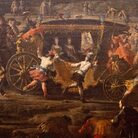 Dal 20 December 2025 al 20 April 2026
Caserta | Reggia di Caserta
Dal 20 December 2025 al 20 April 2026
Caserta | Reggia di Caserta
Regine: trame di cultura e diplomazia tra Napoli e l’Europa
-
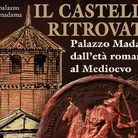 Dal 19 December 2025 al 23 March 2026
Torino | Palazzo Madama - Museo Civico d’Arte Antica
Dal 19 December 2025 al 23 March 2026
Torino | Palazzo Madama - Museo Civico d’Arte Antica
Il castello ritrovato. Palazzo Madama dall’età romana al medioevo
-
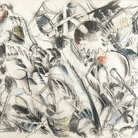 Dal 17 December 2025 al 19 January 2026
Roma | Palazzo della Cancelleria
Dal 17 December 2025 al 19 January 2026
Roma | Palazzo della Cancelleria
De Humana Mensura di Linda Karshan
-
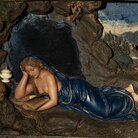 Dal 18 December 2025 al 12 April 2026
Firenze | Gallerie degli Uffizi
Dal 18 December 2025 al 12 April 2026
Firenze | Gallerie degli Uffizi
Cera una volta. Sculture dalle collezioni medicee
-
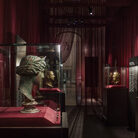 Dal 11 December 2025 al 9 April 2026
Firenze | Museo Archeologico Nazionale di Firenze
Dal 11 December 2025 al 9 April 2026
Firenze | Museo Archeologico Nazionale di Firenze
Icone di Potere e Bellezza
-
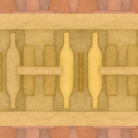 Dal 11 December 2025 al 11 January 2026
Roma | Palazzo Esposizioni Roma
Dal 11 December 2025 al 11 January 2026
Roma | Palazzo Esposizioni Roma
Giorgio Morandi nella Collezione Eni. Un viaggio attraverso la storia culturale del cane a sei zampe e l’eredità di Enrico Mattei



